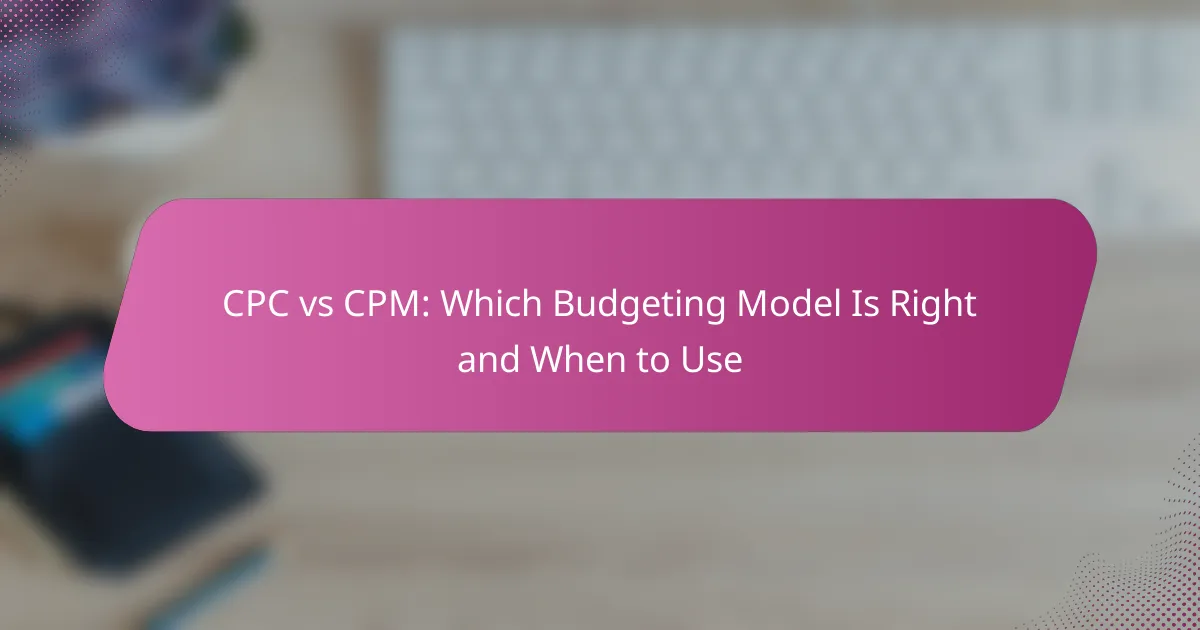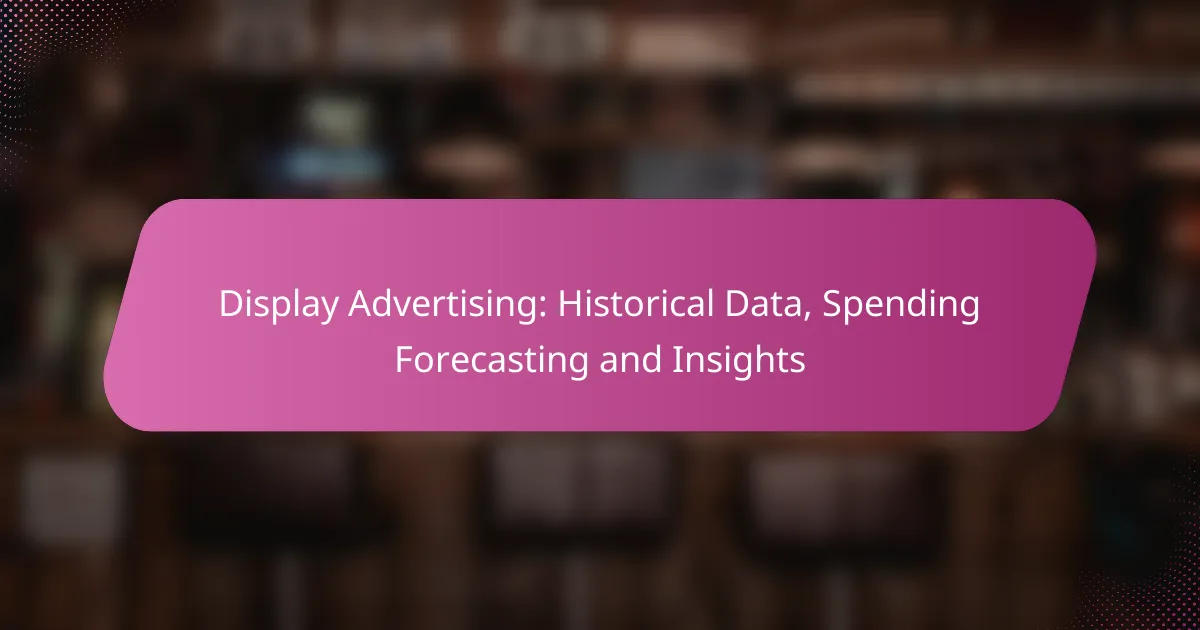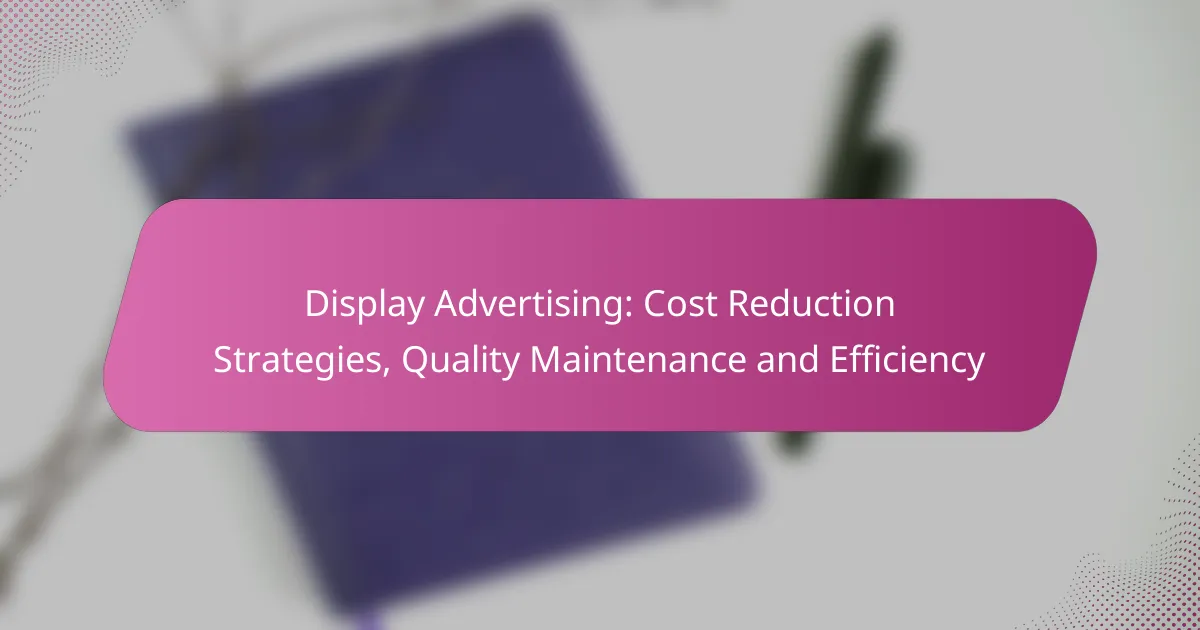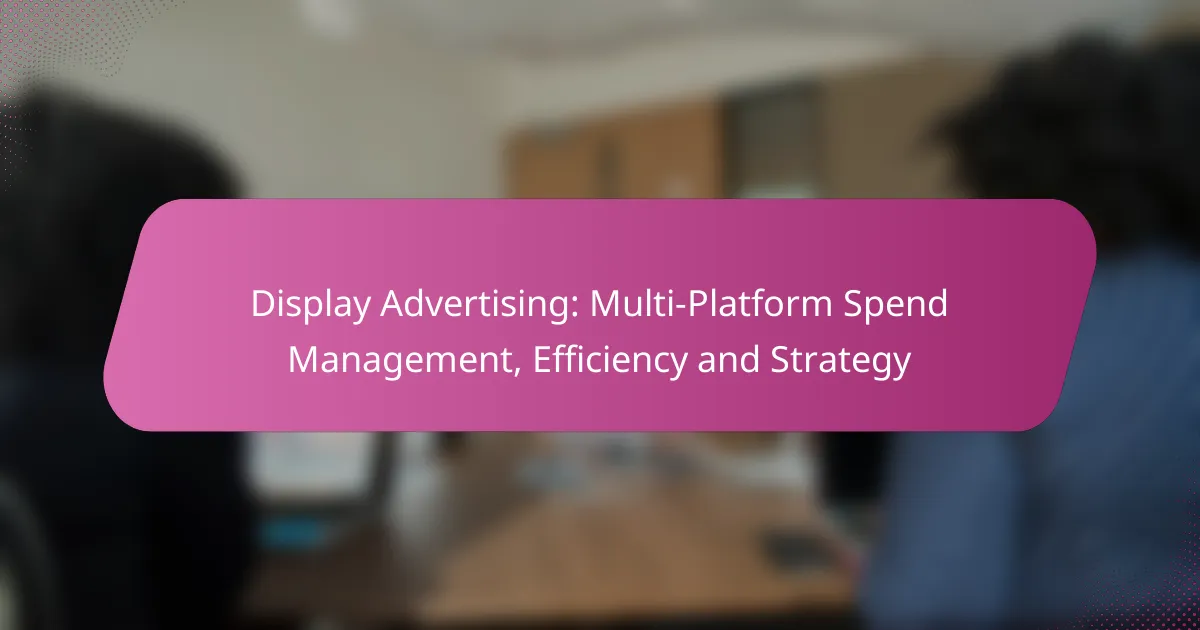CPC (Cost per Click) and CPM (Cost per Mille) are two distinct budgeting models used in display advertising, each serving different campaign objectives. CPC is best suited for driving traffic and generating immediate responses, as advertisers only pay for actual clicks on their ads. In contrast, CPM is ideal for maximizing visibility and brand exposure, allowing advertisers to pay for every thousand impressions to reach a broader audience.
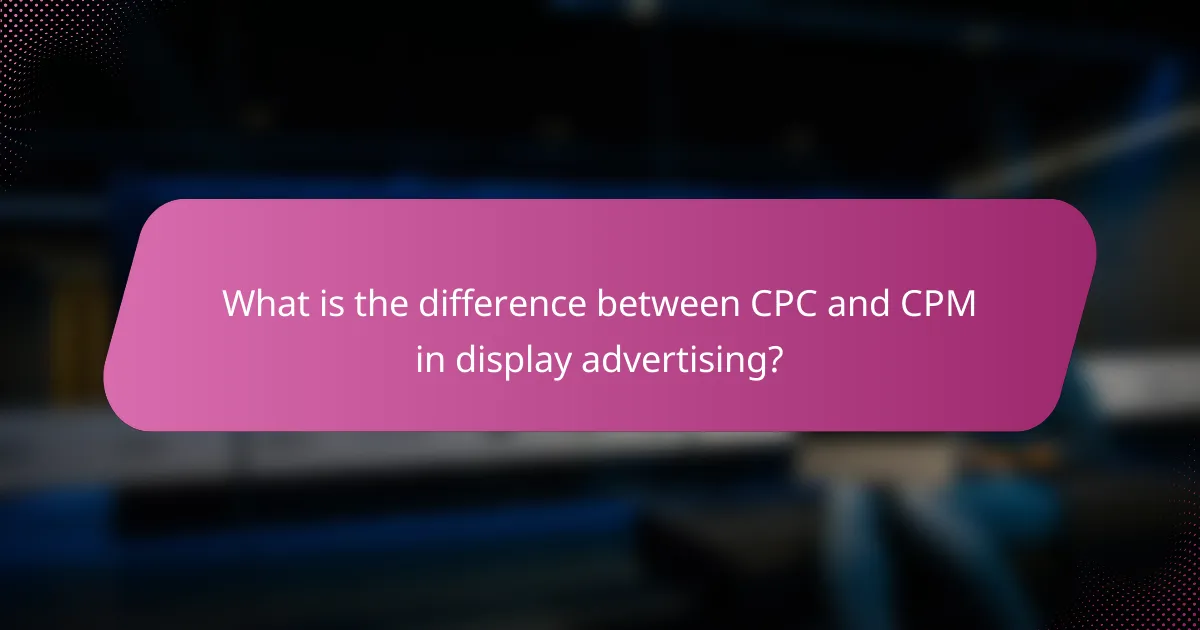
What is the difference between CPC and CPM in display advertising?
CPC (Cost per Click) and CPM (Cost per Mille) are two distinct budgeting models used in display advertising. CPC charges advertisers based on the number of clicks their ads receive, while CPM charges based on the number of impressions, or views, the ads generate.
CPC: Cost per Click
CPC is a model where advertisers pay each time a user clicks on their ad. This approach is particularly effective for campaigns focused on driving traffic to a website or generating leads. Advertisers can set a maximum bid for each click, allowing for control over spending.
For example, if an advertiser sets a CPC bid of $1 and receives 100 clicks, the total cost would be $100. This model is beneficial when the goal is to encourage user engagement and conversions.
CPM: Cost per Mille
CPM, or Cost per Mille, refers to the cost per thousand impressions. Advertisers pay a set fee for every thousand times their ad is displayed, regardless of whether users interact with it. This model is ideal for brand awareness campaigns where visibility is the primary goal.
For instance, if an advertiser pays $5 CPM, they would spend $5 for every 1,000 impressions. This approach is useful for reaching a broad audience and increasing brand recognition.
Key differences in budgeting
The primary difference between CPC and CPM lies in how costs are incurred. With CPC, costs are directly tied to user engagement, while CPM focuses on the volume of impressions. Advertisers should consider their campaign objectives when choosing between these models.
For campaigns aimed at driving specific actions, CPC may be more cost-effective. Conversely, for campaigns focused on maximizing exposure, CPM can provide a better return on investment. Understanding the target audience and campaign goals is crucial for selecting the right model.
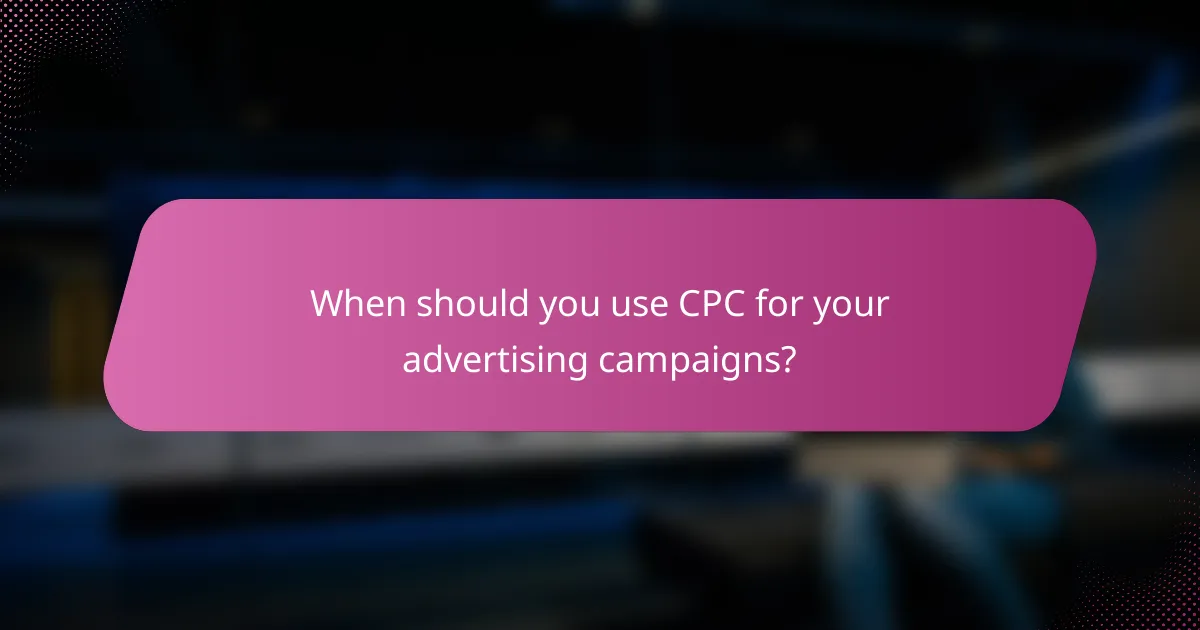
When should you use CPC for your advertising campaigns?
Cost Per Click (CPC) is ideal for advertising campaigns focused on driving traffic and generating immediate responses. Use CPC when you want to pay only for actual clicks on your ads, making it a cost-effective choice for campaigns aimed at engagement and conversions.
Best scenarios for CPC usage
CPC is best used in scenarios where the goal is to increase website visits or lead generation. For instance, if you are launching a new product and want to attract potential customers quickly, CPC allows you to pay only when someone clicks on your ad. This model is particularly effective for e-commerce businesses looking to boost sales through targeted promotions.
Another scenario is when you have a limited budget and want to maximize your return on investment. By focusing on clicks rather than impressions, you can ensure that your spending directly correlates with user engagement.
Targeting specific audiences
CPC campaigns allow for precise targeting of specific demographics or interests, making them suitable for reaching niche markets. For example, if your product appeals to a particular age group or geographic location, you can tailor your ads to reach those users effectively. This targeted approach can lead to higher conversion rates as your ads are shown to individuals more likely to be interested in your offerings.
Utilizing platforms like Google Ads or Facebook Ads can enhance your targeting capabilities, enabling you to refine your audience based on behavior, interests, and location. This ensures that your ad budget is spent efficiently on users who are more likely to convert.
Measuring direct response
One of the key advantages of using CPC is the ability to measure direct responses to your advertising efforts. By tracking the number of clicks and subsequent actions taken on your website, you can assess the effectiveness of your campaigns in real-time. This data allows you to make informed decisions about optimizing your ads and targeting strategies.
Additionally, monitoring metrics such as click-through rates (CTR) and conversion rates can help you understand which ads resonate with your audience. Adjusting your campaigns based on this feedback can lead to improved performance and higher returns on your advertising spend.
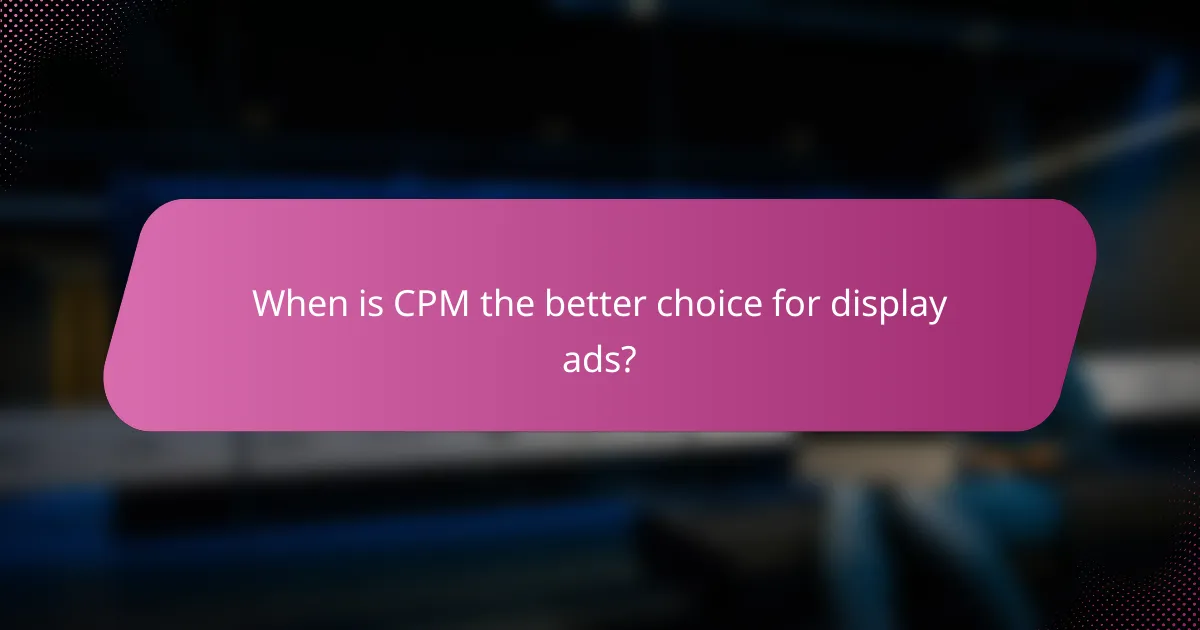
When is CPM the better choice for display ads?
CPM, or cost per mille, is often the better choice for display ads when the goal is to maximize visibility and brand exposure rather than direct conversions. This model allows advertisers to pay for every thousand impressions, making it ideal for campaigns focused on reaching a broad audience.
Brand awareness campaigns
For brand awareness campaigns, CPM is particularly effective as it prioritizes visibility over immediate action. Advertisers can showcase their brand to a large number of users, reinforcing brand recognition and recall. This is crucial for businesses looking to establish a presence in the market or launch new products.
High-volume impressions
CPM is suitable for campaigns aiming for high-volume impressions, as it allows advertisers to reach a wide audience quickly. By paying for impressions rather than clicks, brands can ensure their ads are seen by thousands, if not millions, of potential customers. This is especially beneficial for seasonal promotions or events where visibility is key.
Cost efficiency for large audiences
When targeting large audiences, CPM can be more cost-efficient compared to CPC (cost per click) models. Since the focus is on impressions, advertisers can often achieve lower costs per impression, especially in competitive markets. This approach is advantageous for businesses with a broad target demographic, as it maximizes exposure while controlling costs.
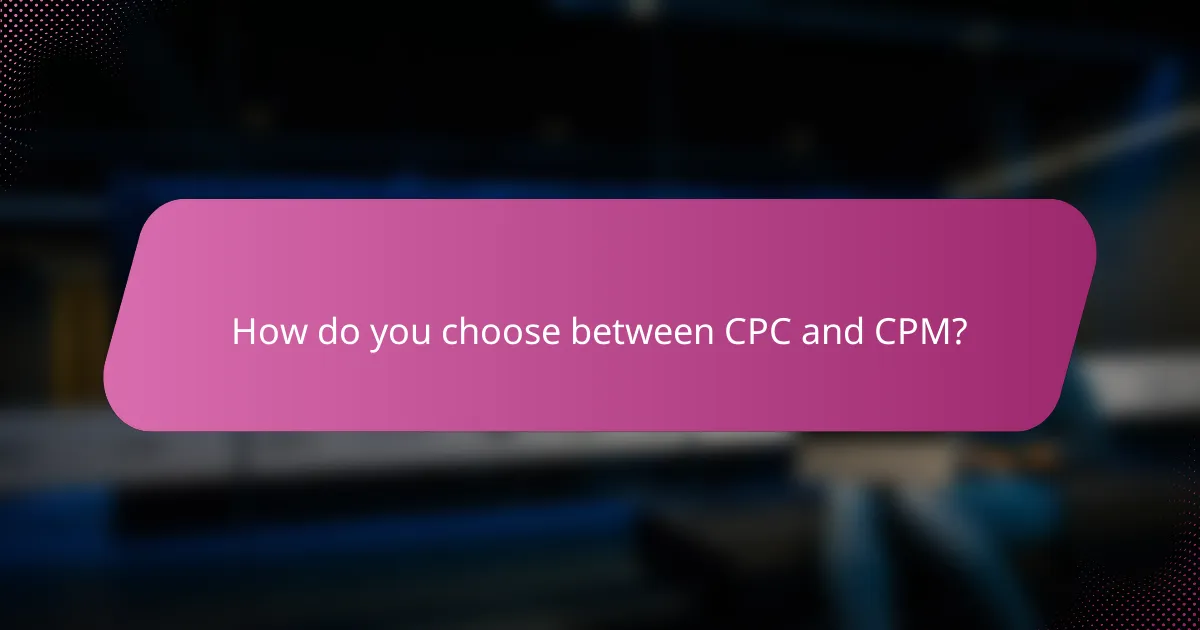
How do you choose between CPC and CPM?
Choosing between CPC (Cost Per Click) and CPM (Cost Per Mille) depends on your campaign goals and budget strategy. CPC is ideal for driving traffic and conversions, while CPM is better for brand awareness and visibility.
Factors to consider in decision-making
When deciding between CPC and CPM, consider your target audience and the nature of your campaign. CPC is often more effective for campaigns focused on immediate actions, like sales or sign-ups, whereas CPM suits campaigns aimed at reaching a broad audience.
Evaluate the platforms you plan to use, as some may favor one model over the other. For instance, social media platforms often provide flexibility in choosing between CPC and CPM based on your objectives.
Campaign goals and objectives
Your campaign goals significantly influence the choice between CPC and CPM. If your primary aim is to drive traffic to a website or generate leads, CPC is typically the better option. This model allows you to pay only when users click on your ads, maximizing your budget efficiency.
Conversely, if your goal is to increase brand awareness or reach a large audience, CPM may be more suitable. This model charges you for every thousand impressions, making it easier to achieve visibility without focusing on immediate clicks.
Budget constraints and ROI expectations
Budget constraints play a crucial role in selecting between CPC and CPM. If you have a limited budget and need to ensure every dollar counts, CPC can help you control costs by paying only for actual clicks. This approach can lead to a higher return on investment (ROI) if managed properly.
On the other hand, if your budget allows for broader spending and your focus is on brand exposure, CPM might yield better results. Keep in mind that while CPM can be cost-effective for visibility, it may not directly correlate with immediate sales or conversions.
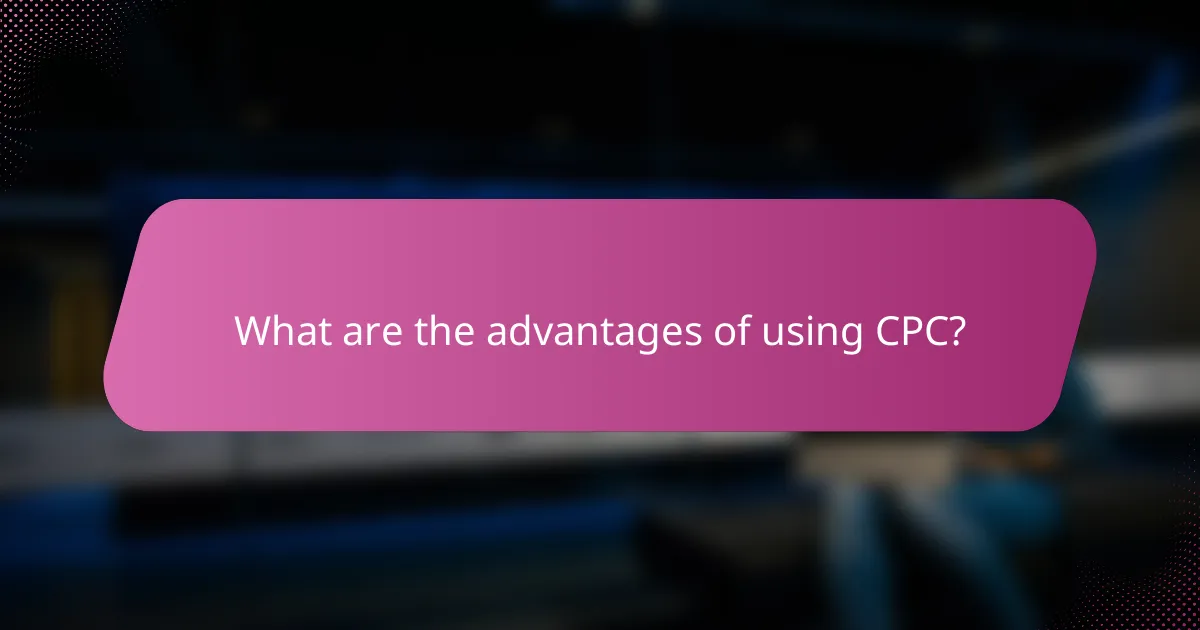
What are the advantages of using CPC?
Cost-Per-Click (CPC) advertising offers several advantages, particularly in terms of budget management and performance tracking. Advertisers pay only when a user clicks on their ad, making it a cost-effective option for driving traffic and generating leads.
Direct control over spending
CPC allows advertisers to have precise control over their advertising budget. You can set a maximum bid for each click, ensuring that you never exceed your budget. This model is particularly beneficial for small businesses or campaigns with limited funds, as it allows for careful monitoring of expenses.
For example, if you set a daily budget of $50 with a maximum CPC bid of $1, you can expect to receive up to 50 clicks per day, depending on the competition for your chosen keywords. This level of control helps prevent overspending and allows for adjustments based on campaign performance.
Performance-based results
CPC advertising is inherently performance-based, meaning you only pay for actual engagement with your ads. This model encourages advertisers to optimize their ad copy and targeting to improve click-through rates (CTR) and overall effectiveness. By focusing on performance, you can achieve better returns on your investment.
Tracking metrics such as CTR and conversion rates can help you refine your campaigns. If certain keywords or ads are underperforming, you can quickly adjust your strategy to maximize results. This responsiveness is a key advantage of using CPC.
Effective for lead generation
CPC is particularly effective for lead generation campaigns, as it drives targeted traffic to landing pages where users can convert into leads. By focusing on specific keywords and demographics, advertisers can attract users who are more likely to engage with their offerings.
For instance, if you are running a campaign for a local service, targeting relevant keywords can help you reach potential customers in your area. This targeted approach not only increases the likelihood of clicks but also enhances the chances of converting those clicks into valuable leads.
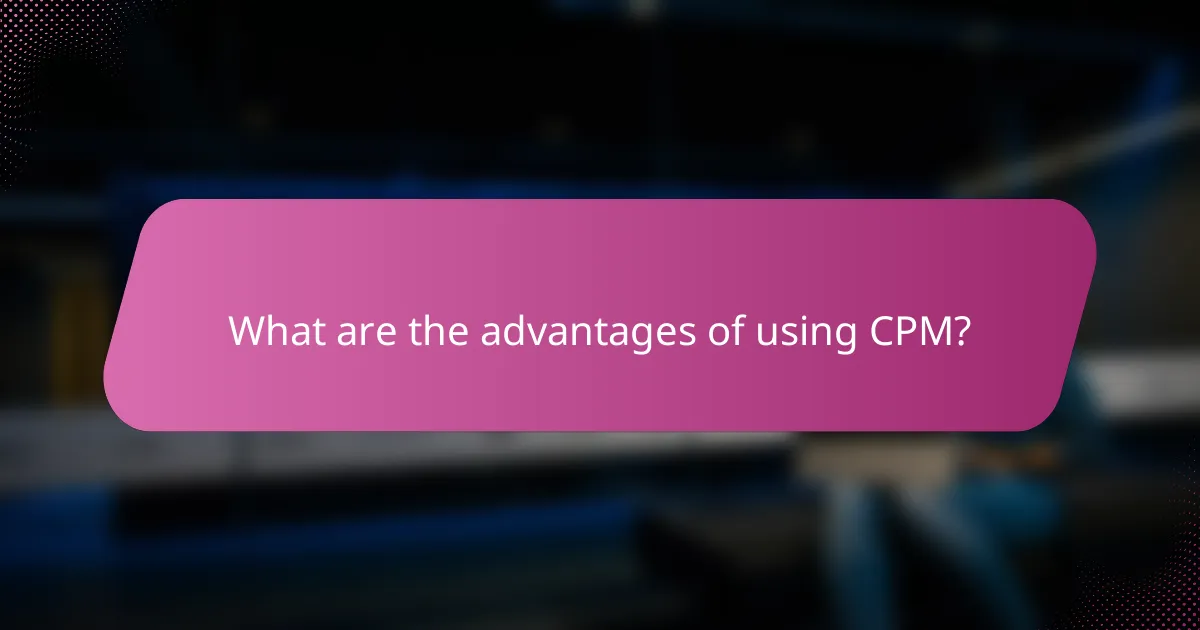
What are the advantages of using CPM?
Cost Per Mille (CPM) offers several advantages, particularly for brand awareness campaigns. It allows advertisers to pay for impressions rather than clicks, making it ideal for reaching a broad audience efficiently.
Effective for Brand Awareness
CPM is particularly effective for campaigns aimed at building brand awareness. By paying for impressions, brands can ensure their message reaches a large number of potential customers, which is essential for establishing recognition in the market.
For instance, a company launching a new product may choose a CPM model to maximize visibility across various platforms, ensuring that their ads are seen by thousands or even millions of users.
Predictable Budgeting
Using CPM allows for more predictable budgeting since advertisers know the cost per thousand impressions upfront. This predictability helps in planning and allocating resources effectively across different campaigns.
For example, if a brand has a budget of $10,000 and the CPM rate is $10, they can expect to receive approximately 1 million impressions. This clarity aids in assessing the overall reach of the campaign.
Suitable for High-Volume Campaigns
CPM is ideal for high-volume advertising campaigns where the goal is to generate as many impressions as possible. This model works well for advertisers looking to saturate the market with their message.
In practice, brands often use CPM for seasonal promotions or events, where they aim to maximize exposure quickly. This approach can lead to increased brand recall and customer engagement over time.
